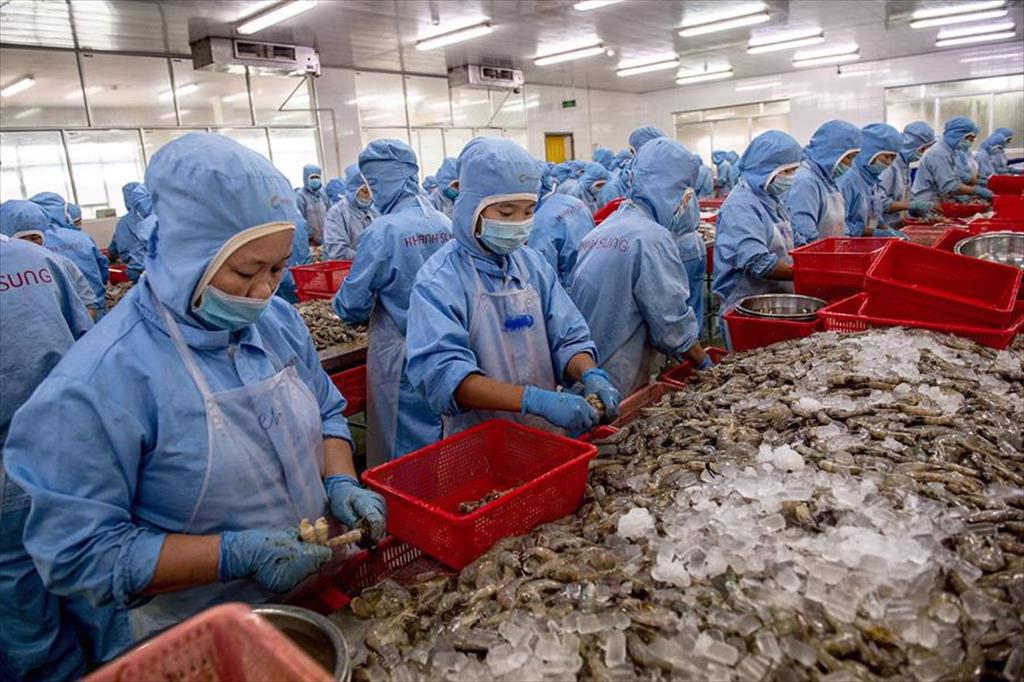(seafood.vasep.com.vn) According to the General Department of Vietnam Customs, in the first three months of 2022, seafood exports reached 307 thousand tons, 2.5 billion USD, up 18.5% in volume and 38.7% in value over the same period in 2021...
The above results indicate that Vietnam's seafood industry has the ability to recover quickly, with many seafood suppliers having successfully redirected business strategies towards retail and e-commerce channels to strengthen connections and expand customers.
Setting high growth goals
After a strong revival in the first quarter of 2022, CL-FISH CORP recently submitted its business plan 2022 with the targets simultaneously accelerating. Accordingly, net revenue is expected to reach 1,450 billion VND, up 20% and pre-tax profit is expected to reach 200 billion VND, 4 times higher than the previous year.
Similarly, according to Mr. Le Thanh Thuan, Chairman of IDI CORP, the company set a target of net revenue of 8,300 billion VND, up 45% over 2021, and profit after tax of 900 billion VND, 6.3 times higher than the same period last year.
Currently, IDI has signed enough export orders until the end of the second quarter of this year. At the same time, a stockpile of up to 1,400 billion VND of cheap pangasius (17,000-18,000 VND/kg) has also been prepared, especially in two big markets Mexico and Brazil.
Mr. Ong Hang Van, Deputy General Director of TG FISHERY admitted that besides the China market which faced many difficulties due to the Zero Covid policy, other markets like the EU, the US... all grew well with an increase of 30%.
Meanwhile, other large enterprises such as FIMEX VN or VINH HOAN CORP, are also planning double-digit growth in profits. Ms. Nguyen Ngo Vi Tam, General Director of VINH HOAN CORP, said that the capacity of factories has returned to the level before the Covid-19 outbreak.
However, besides opportunities, seafood exporters also face some challenges. Firstly, sea freights are currently still higher than last year's peak and are expected to continue to increase sharply.
In addition, the complicated weather due to climate change and the shortage of water supply to the Mekong Delta region can also affect the supply and input prices of raw materials for the shrimp industry. The feed price has continuously increased since last year, pushing up the cost of raising fish, which may also make businesses unable to meet customer demand.
 The shortage of water supply to the Mekong Delta region can also greatly affect the supply and input price of materials for the shrimp industry.
The shortage of water supply to the Mekong Delta region can also greatly affect the supply and input price of materials for the shrimp industry.
Moreover, despite a large number of orders, many seafood processing factories in the Mekong Delta region face a serious shortage of labor. “Currently, all localities have industrial zones with many textile and garment factories; therefore, workers have many options. Along with that, working in the seafood industry is considered quite difficult, so many workers have switched to other occupations. This makes recruitment even more challenging," said Mr. Ong Hang Van.
In the second quarter of this year, Vietnam's seafood exports are expected to continue to increase. In which, pangasius may increase by more than 50% compared to the same period of 2021. Therefore, the demand for labor will continue to increase in the near future.
Taking advantage of opportunities
According to the Ministry of Industry and Trade’s assessment, in the first quarter of 2022, seafood exports achieved the highest results compared to the first quarter of every year so far, signaling a year of seafood export with many growth prospects. However, in the coming time, Vietnam's seafood export is likely to slow down because the global seafood consumption demand may decelerate due to the impact of inflation and the difficulty in transportation.
It is forecasted that although seafood exports in April will continue to be affected by the Russia-Ukraine conflict, there will still be growth momentum in major markets such as the US and EU as trade activities have returned to normal. Therefore, seafood exports in April are expected to maintain a growth rate of 25%, reaching 934 million USD. Accordingly, pangasius exports will still increase by 80% and shrimp up 20%, tuna up 18%, cephalopod up 25%...
According to the Ministry of Agriculture and Rural Development, the demand for seafood products is very high. Therefore, the agricultural sector is directing localities to ensure the supply of seafood materials for processing and exporting.
Regarding businesses, now this is an opportunity for businesses to restore production and increase sales. This is also the time when businesses can take advantage of the EVFTA and UKVFTA, which can help them promote all items in the markets.
According to Mr. Truong Dinh Hoe, General Secretary of VASEP, more than 85% of the export volume of enterprises currently depends on the ports of Ho Chi Minh City and Vung Tau, the rest goes through the border gates in the North and the Central region. With a large number of exported seafood products in the Mekong Delta, besides logistics, the difficulty that enterprises are most concerned about is the cost of transporting export goods.
Besides the cost of containers, businesses demand an effective solution to reduce the cost and time of transporting goods from the Mekong Delta provinces to export ports. If there is an efficient port system, this will help significantly reduce costs for businesses.
Compiled by Phuong Linh